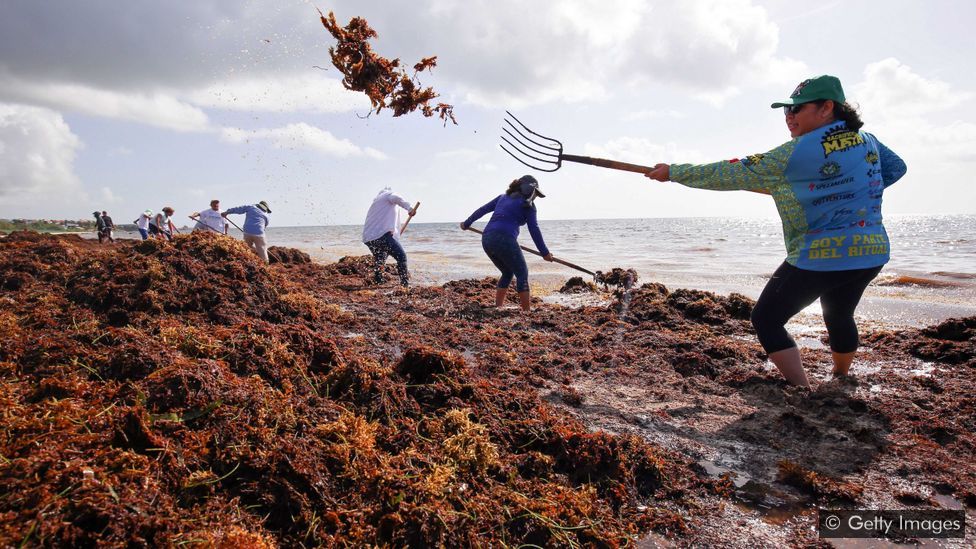A sargassum bloom the width of the Atlantic Ocean caused havoc on beaches, but locals in Mexico and the Caribbean are fast finding ways to turn the seaweed invasion to their advantage.
The following written content by Isabelle Gerretsen via BBC Future Planet

In the summer of 2018, an almost incomprehensibly large mass of stringy brown seaweed appeared in the Atlantic Ocean. It stretched from one coast to the other, from the shores of West Africa to the Gulf of Mexico. Spanning 8,850 kilometres (5,000 miles), the seaweed bloom, known as the great Atlantic sargassum belt, was the largest ever recorded. Researchers analysing satellite images of the bloom estimated its mass to be more than 20 million tonnes – heavier than 200 fully loaded aircraft carriers.

While the 2018 event was a record, sargassum blooms have been a nuisance in the Atlantic for some years, where they harm coastal biodiversity, fisheries and the tourism industry in the Caribbean and Mexico. Barbados declared a national emergency in June 2018 after its shorelines were engulfed by sargassum.
And it is a problem that appears to be getting worse in the Atlantic. After analysing 19 years of satellite data, researchers at the University of South Florida found that since 2011 the sargassum bloom has appeared annually and is growing in size.
“2011 was a tipping point. Before that we did not see much sargassum. After that we are seeing recurring, massive sargassum blooms in the central Atlantic,” says Mengqiu Wang of the University of South Florida, one of the team who discovered the Atlantic-spanning bloom in 2018. The blooms are at their largest in June and July, she says.
Other researchers, such as Elizabeth Johns of the US’s National Oceanic and Atmospheric Administration, agree that 2011 was a tipping point for sargassum in the Atlantic, suggesting future blooms are likely to be even larger. Indeed, a Caribbean research cruise in autumn 2014 recorded sargassum concentrations 10 times that of the 2011 event, and 300 times greater than any other autumn in the previous 20 years, according to research by marine scientist Amy Siuda and colleagues at the Sea Education Association, Woods Hole in Massachusetts.
While the exact causes for the boom have yet to be pinned down, Wang’s team believes that a number of environmental factors are contributing to the sargassum explosion. Among them are abnormal ocean currents and wind patterns linked to climate change. Read more from BBC Future Planet.
“News Without Politics” keeps you updated on interesting and relevant news stories in the U.S and abroad without media bias.
Stay informed daily.





